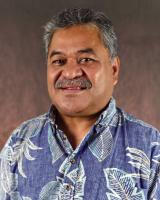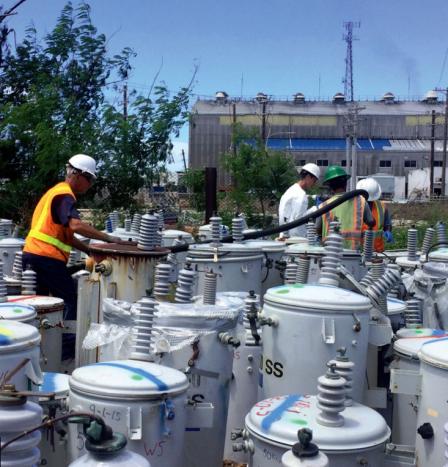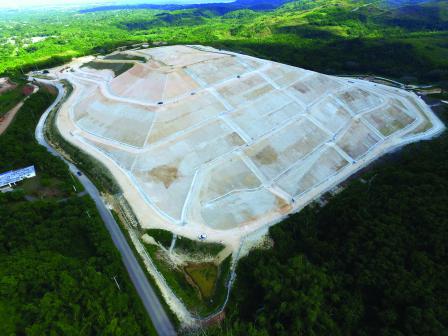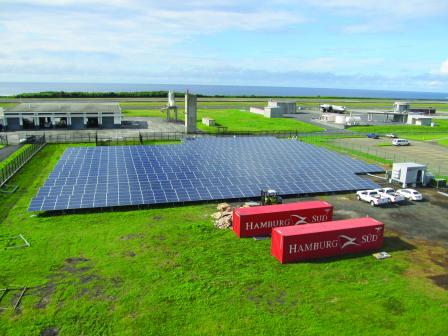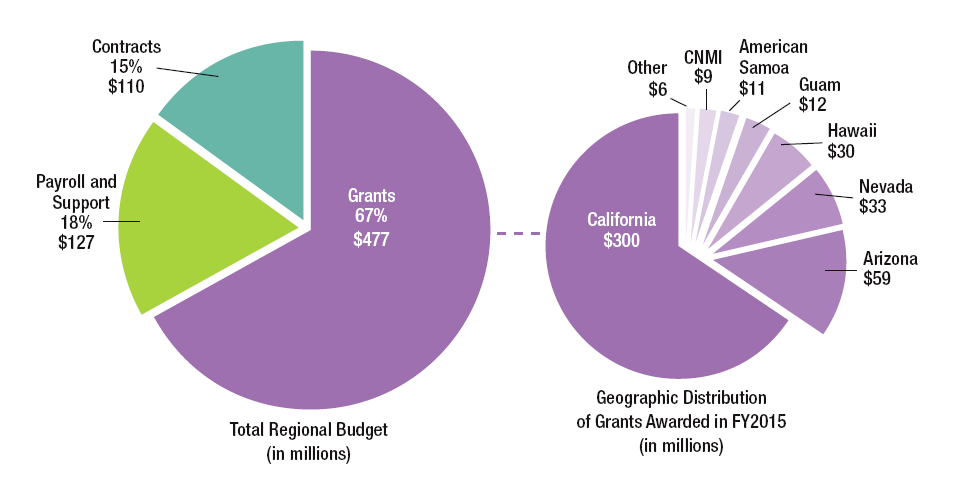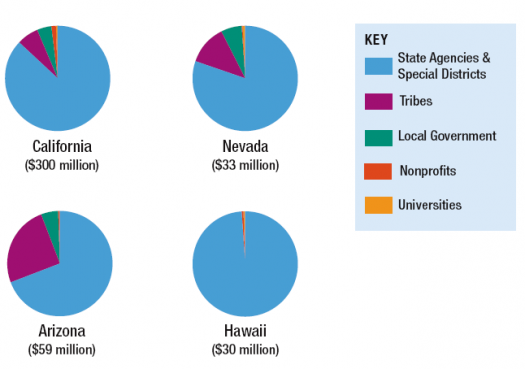2016 EPA Pacific Southwest Progress Report
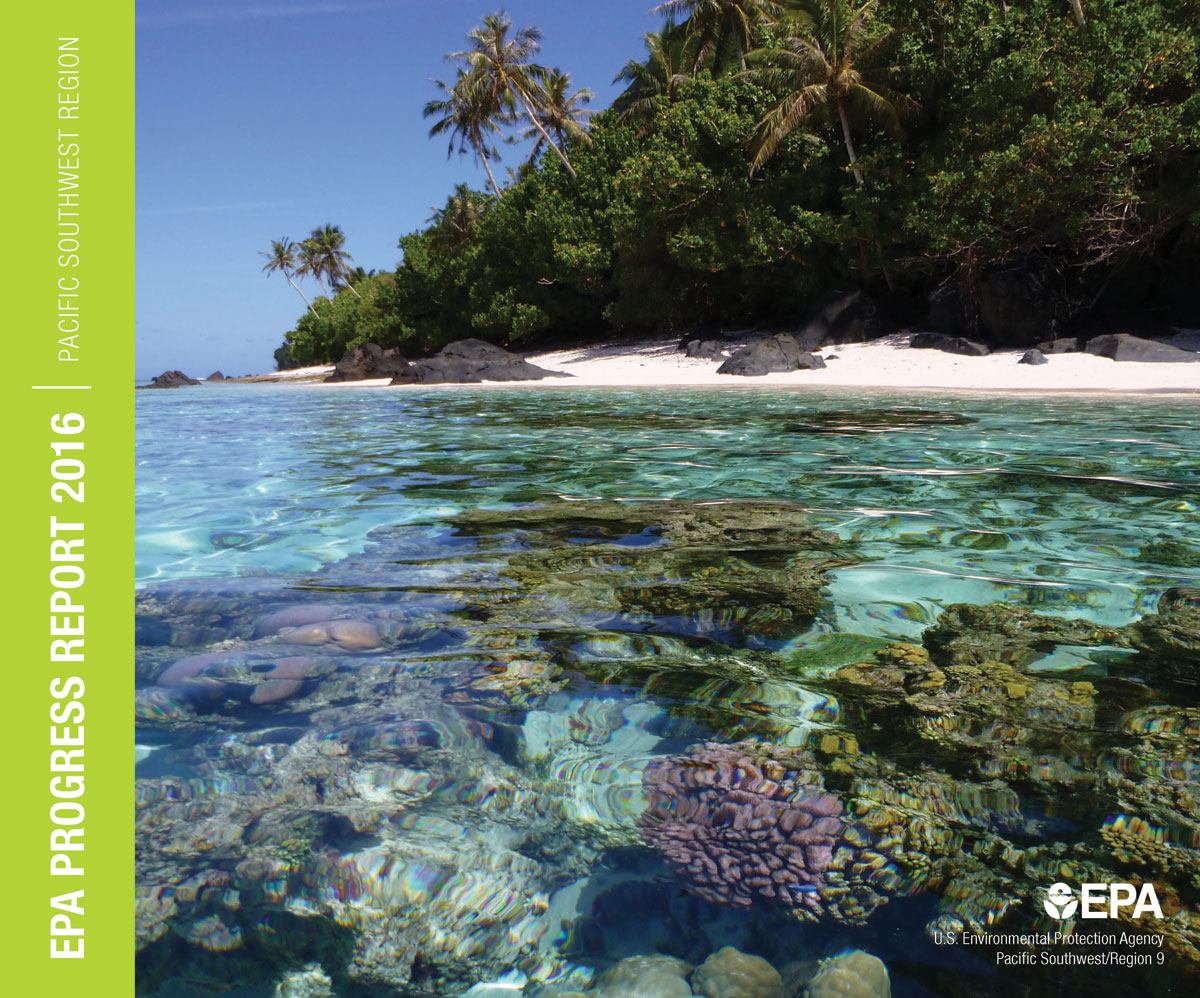
Clean Air


Taking Action on Climate
As federal courts consider the future of EPA's Clean Power Plan, states and local governments press forward to reduce greenhouse gas emissions in the Pacific Southwest.
- Western States Advance Cleaner Energy »
In August 2015, President Obama and EPA announced the Clean Power Plan as a means to cut carbon pollution from power plants. In the plan, EPA established carbon dioxide emission performance rates for facilities that generate electricity. Implementation was stayed by the U.S. Supreme Court in early February pending judicial review.
With the effects of climate change already being felt, western partners are forging ahead in adopting cleaner energy strategies and reducing greenhouse gas emissions.
California Governor Jerry Brown and governors of fifteen other states, including Nevada and Hawaii, announced on February 16, 2016, that they're joining a "Governor's Accord for a New Energy Future," intended to modernize their power grids, sustain the momentum of renewable energy development, and boost the numbers of electric cars.
Nevada Governor Brian Sandoval said that companies have invested $4.3 billion in renewable energy projects in Nevada since 2009. California Air Resources Board Chair Mary Nichols said "We're part of a larger group of states moving forward on our own, and we'll continue developing our own plans regardless" of the fate of the Clean Power Plan.
Meanwhile, states and local governments are making commitments to significantly reduce greenhouse gas emissions. The state of California and the cities of Los Angeles, Oakland and San Francisco joined a coalition of 127 jurisdictions representing 27 countries and six continents on the Under 2 MOU. Their goal is to limit emissions to 80% to 95% below 1990 levels by 2050 – in an effort to limit the global average temperature increase to below 2˚C.
Local entities are also working to make cleaner energy options available to communities. In California's Marin County, Marin Clean Energy now offers a 100% Local Solar Energy option for its customers.
Boosting Renewable Energy
Expanding renewable energy is key to cleaner air and reducing greenhouse gas emissions.
- Local, Federal Agencies Join Forces »
 EPA Administrator Gina McCarthy joins local officials to
EPA Administrator Gina McCarthy joins local officials to
celebrate the Regional Renewable Energy Procurement
program in Hayward, Calif.In May 2015, EPA Administrator Gina McCarthy joined San Francisco Bay Area agencies to celebrate the Regional Renewable Energy Procurement project (R-REP), the nation's largest solar energy collaboration involving local, state and federal government agencies. At the same time, McCarthy announced the Federal Aggregated Solar Procurement Project, the nation's first federal agency partnership to purchase solar power.McCarthy joined R-REP lead partner Alameda County, local officials and solar industry executives at the West Winton Landfill in Hayward, centerpiece of a 19-agency effort involving 186 Bay Area facilities developing 31 megawatts of solar power. The landfill will be repurposed by installing 19,000 photovoltaic solar panels to generate more than 6 megawatts of power – the first project of its kind in the Bay Area.
Like the regional project, the federal partnership – including the U.S. Forest Service, Department of Energy (DOE), and General Services Administration (GSA) – will take advantage of economies of scale in solar installation at nine federal sites: seven in California (San Jose, Menlo Park, Sacramento, San Francisco, San Bruno, Santa Rosa, and Mare Island) and two in Nevada (Carson City and Reno).
The initial project will provide five megawatts to a U.S. Forest Service facility and eight GSA locations in California and Nevada. GSA, in partnership with DOE, EPA and the Forest Service, awarded this contract to SolarCity Corp. of San Mateo, Calif.
- Creating Jobs, Supporting Employers »
Marin Clean Energy's Solar One project is expected to break ground this year on a 12-megawatt photovoltaic power array on a 60-acre brownfield site at Chevron's Richmond Refinery. Under a community agreement, 50% of the construction workers will be local graduates of Richmond-BUILD, a green-jobs training program partially funded by EPA.
In Southern California, EPA has teamed with the South Coast Air Quality Management District to accelerate deployment of solar-powered electric vehicle (EV) charging stations at worksites.
Through an EPA grant, the district is providing rebates to qualified entities to lower the cost of installation. In addition, EPA is providing free technical assistance in installing solar EV charging stations for any business, nonprofit or government agency. Solar photovoltaic arrays can be placed on workplace roofs and carports, or off-site, generating clean power to recharge commuters' cars while their owners are at work.
Focus on California
In the battle to reduce fine particulate air pollution, EPA provides both targeted funding and strong enforcement.
- Funding Cleaner Engines, Wood Stoves »
Old diesel trucks and equipment are one of the largest sources of fine particulates, which pose serious health threats to people with asthma and heart disease.
In 2015, EPA's West Coast Collaborative awarded more than $4.5 million in Diesel Emission Reduction Act (DERA) funding to California agencies to reduce diesel, greenhouse gas and black carbon emissions from old trucks, buses, tractors and harbor equipment.
More than half of the funds went to the Los Angeles and Long Beach Harbor Departments, which received $2.5 million to replace an old diesel cargo crane with a new, zero-emission electric crane, and to replace eight existing yard diesel tractors with all-electric automated guided vehicles.
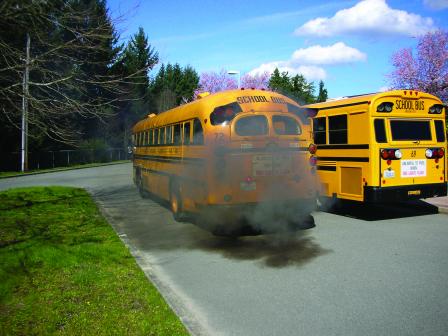 New school buses are significantly cleaner than old diesel models, reducing children's exposure to unhealthful emissions.The California Air Resources Board and Sacramento's air quality district together received more than $1 million to replace old diesel refuse trucks and farm tractors and to retrofit school buses with filters that can reduce particulate emissions by 85%.
New school buses are significantly cleaner than old diesel models, reducing children's exposure to unhealthful emissions.The California Air Resources Board and Sacramento's air quality district together received more than $1 million to replace old diesel refuse trucks and farm tractors and to retrofit school buses with filters that can reduce particulate emissions by 85%.The San Joaquin Valley Air Pollution Control District received more than $1 million in DERA grants to speed up replacement of 80 diesel farm tractors with new, cleaner-burning Tier 4 tractors.
In addition, the San Joaquin Valley received almost $5 million and the Northern Sierra air quality district received $2.5 million from EPA's Targeted Air Shed Grant Program.
The San Joaquin district will provide funding to replace agricultural tractors and residential wood stoves. The Northern Sierra district will fund the replacement of older wood stoves with cleanerburning devices in the Portola area, where stoves are a heavy contributor to particulate pollution in the winter.
- Enforcement Brings Air Quality Benefits »
Three major enforcement cases also served to cut pollution from wood stoves in California – while achieving major reductions in emissions from trucks and factories.
In the first, under California's Truck and Bus Regulation, EPA found that Estes Express Lines failed to install particulate filters on 73 heavy-duty diesel trucks. The Virginia-based company paid a $100,000 penalty and contributed $35,000 to UC Davis Extension to finance a training program on compliance for out-of-state trucking firms.
The California truck rules are the first of their kind in the nation and are expected to prevent an estimated 3,500 deaths between 2010 and 2025. Heavy-duty diesel trucks in California must meet 2010 engine emissions standards or use diesel particulate filters.
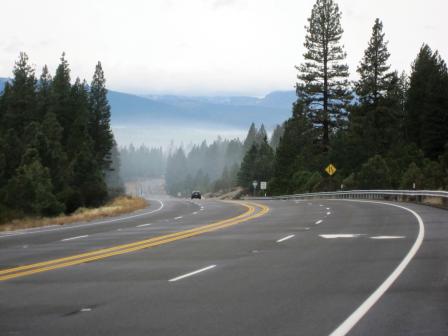 Wood smoke hangs over the Portola area of Plumas County, Calif., which has failed to meet standards for particulate air pollution. (Photo: Northern Sierra AQMD)As part of its settlement with EPA, Estes also paid $255,000 to the San Joaquin district's BurnCleaner incentive program to replace woodburning stoves with cleaner ones. The program received an additional $350,000 as a result of EPA enforcement actions against two industrial facilities in the valley:
Wood smoke hangs over the Portola area of Plumas County, Calif., which has failed to meet standards for particulate air pollution. (Photo: Northern Sierra AQMD)As part of its settlement with EPA, Estes also paid $255,000 to the San Joaquin district's BurnCleaner incentive program to replace woodburning stoves with cleaner ones. The program received an additional $350,000 as a result of EPA enforcement actions against two industrial facilities in the valley:Guardian Glass will spend $70 million to install air pollution controls to reduce emissions of nitrogen oxide (NOX), sulfur dioxide (SO2), particulates and sulfuric acid (H2SO4) at all seven of its manufacturing facilities in the U.S., including one in Kingsburg in Fresno County. Guardian also paid a $312,000 civil penalty.
The J.R. Simplot Company will spend $40 million to cut SO2 emissions by more than 50% at five of its facilities in California, Idaho and Wyoming – including its sulfuric acid plant in Lathrop, near Stockton, Calif. The company will also pay an $899,000 fine. SO2 is a precursor to fine particulate (PM2.5) pollution, which is an acute problem in the San Joaquin Valley.
Clean Water


Turning the Tide of Trash
Ten years ago, trash in California's waterways seemed like an intractable problem. Now it's trending downward fast – helping reduce marine debris in the Pacific.
- Improving Stormwater Management »
When heavy rains occur in California's urban areas, stormwater runoff washes tons of trash from streets and parking lots into nearby waterways – and ultimately the Pacific Ocean. Trash seriously degrades habitats for fish and wildlife, and can lead to fatal ingestion or entanglements.
As much as 80% of the trash that ends up as marine debris is generated on land. Much of it is plastic, ultimately adding to the Great Pacific Garbage Patch, the massive vortex of marine debris in the mid-Pacific, where it breaks down into tiny bits consumed by birds, fish and other wildlife mistaking it for food.
The tide of trash began to turn when EPA and the state recognized the problem by designating waterways as "impaired" by trash under the federal Clean Water Act, which requires states to develop pollution reduction plans for these waters or alternative control approaches. The plans are called Total Maximum Daily Loads (TMDLs), and must be approved by EPA.
This spurred the state's Los Angeles Regional Water Quality Control Board and local governments to take action. In the Los Angeles River watershed, 42 cities implemented trash control systems, including capture devices in storm drains, resulting in a dramatic reduction in trash entering the LA River. In 2015, the city of LA reported trash reductions of 100% based on trash in storm drains measured in 2002-2004. Similar measures in parts of the San Francisco Bay Area reduced trash in waterways about 40% by 2014.
In addition, the LA regional board adopted the first TMDL for trash in Santa Monica Bay to prevent plastic pellets known as "nurdles," used in manufacturing plastic products, from reaching the bay and its beaches.
- EPA Approves California's Trash Policy »
Last year, the State Water Resources Control Board adopted an innovative first-of-its kind statewide policy designed to keep trash out of all streams, lakes, bays, estuaries, and coastal and ocean waters. California's new Trash Control Policy includes a water quality standard for trash. EPA approved the standard in January 2016.
The new trash policy prohibits the discharge of trash to state waters through storm drain systems, transportation corridors, and industrial and construction sites that are regulated under stormwater permits. It calls for the use of trash-capture devices in areas that generate large amounts of garbage.
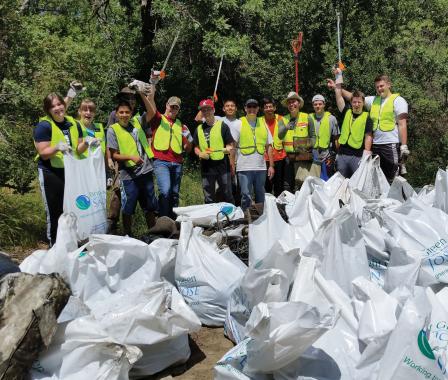 Volunteers clean up trash in Coyote Creek.
Volunteers clean up trash in Coyote Creek.
(Photo: City of San Jose, Calif.)Municipalities and other stormwater permit holders must comply by installing either full trash-capture systems or similar devices coupled with programs like increased street sweeping and educational outreach to prevent litter.This approach has already proven successful in the Los Angeles and San Francisco Bay regions. The LA River is targeted to reach zero trash discharged from stormwater sources in 2016. The recently updated San Francisco Bay stormwater permit has a target date of 2022 for zero trash.
Reaching the goal of zero trash will require continued vigilance, not only by regional water boards and local governments, but by individuals and businesses. California's success in reducing trash in waterways has led EPA to start a national Trash Free Waters program, which will also benefit from local research in the distribution and effects of microplastics.
www.waterboards.ca.gov/water_issues/programs/trash_control/
www.epa.gov/region9/marine-debris
Responding to Drought
EPA is working with federal, state and local partners to improve sustainable water management.
- Funding Water-Saving Infrastructure »
After four years of the most severe drought in the region's history, water managers are increasingly looking to EPA's Drinking Water and Clean Water State Revolving Funds (SRFs) to help them invest in infrastructure to conserve water.
In Southern California, the city of Carlsbad is using $30 million in low-interest loans from EPA's Clean Water SRF to nearly double its capacity to treat water for non-potable uses like irrigation and industry. The project will expand the city's capacity to 7,235 acre-feet per year, build 18 miles of pipeline and a new storage tank, and install 156 water meters.
Once completed, Carlsbad will recycle all of its wastewater during summer months, meeting nearly 33% of its annual water needs.
The Orange County Water District completed an even bigger project in 2015, expanding its groundwater replenishment system's capacity by 31,000 acre-feet per year. The project, financed by $137 million from the Clean Water SRF, takes secondary-treated wastewater and further treats it to meet drinking water standards. The purified water goes to percolation basins, where it recharges groundwater, and is pumped to supply drinking water.
For the year ending in June 2015, Clean Water SRF agreements worth $789 million were executed to finance water recycling projects in California.
- Federal Agencies Step Up »
EPA's WaterSense Program has been working with the Department of Housing and Urban Development to find ways to increase the water efficiency of millions of households assisted by the agency.
EPA collaborated with HUD on the Water Wednesday Webinar series, which helped HUD staff and grantees in the Pacific Southwest incorporate water efficiency into their programs, saving water, energy and money. More than 1,200 people have taken part in the webinars, including staff from USDA's Rural Development program, as well as state and local housing officials.
The Department of Veterans Affair's 561-acre Sacramento Valley National Cemetery won a Federal Green Challenge award in 2015 for reducing water consumption by more than 22% – nearly 14 million gallons – while keeping its grass green.
The cemetery used a moisture-monitoring sensor and irrigation control system to ensure efficient water usage. Workers re-programmed their system to turn off after it rains, audited their sprinkler system, and re-aligned irrigation heads to prevent waste.
Irrigation controllers with EPA's WaterSense label use local weather and landscape conditions to tailor watering schedules to plants' actual needs.
The Federal Green Challenge, led by EPA, encourages federal facilities to reduce their environmental impact. In 2014, agencies diverted over 390,000 tons of waste from landfills, saved nearly 80 million gallons of water, and sent 450 tons of e-waste to certified recyclers, saving taxpayers over $24 million.
www.epa.gov/watersense
www.epa.gov/fgc
Focus on Tribes
EPA works with tribes to build operational and regulatory capacity to protect water resources.
- Strengthening Infrastructure »
Since the early 1990s, EPA has provided financial assistance to tribes for construction of drinking water and wastewater infrastructure. In addition, EPA provides grant funding to more than 100 tribes in the region to build tribal capacity to administer water quality programs and protect tribal rivers, lakes and streams.
EPA supports tribal water quality monitoring, assessment, prevention of polluted runoff in waterways, development of water quality standards, and wetlands protection. In addition to $29 million for tribal clean water programs and infrastructure projects in the Pacific Southwest in 2015, EPA has provided assistance and expertise in several areas.
During the recent drought emergency in California, state and federal agencies helped many California tribes prevent and respond to drinking water shortages. The Indian Health Service, EPA and other agencies collaborated to produce a tribal drought planning handbook to help identify state and federal resources available to secure emergency drinking water supplies. It's online at http://go.usa.gov/cwaDT. Exit
In January 2016, the Hoopa Valley Tribe became one of 10 communities selected from across the country to receive financial planning assistance for wastewater infrastructure under a new national program known as WaterCARE. Through this program, EPA will help communities make wise infrastructure investments by conducting financial evaluations and identifying partnership opportunities.
The tribe, located in California's North Coast region, will receive financial and technical guidance to plan wastewater system upgrades that will help prevent pollution of the Trinity River and its tributaries, thereby protecting drinking water sources for many tribal homes.
- Supporting Tribal Clean Water Act Programs »
 Walker River Paiute tribal leaders have received authority to set standards under the Clean Water Act.EPA is currently working on two proposed regulations that would enable tribes to implement the Clean Water Act on their lands, in a manner similar to states.
Walker River Paiute tribal leaders have received authority to set standards under the Clean Water Act.EPA is currently working on two proposed regulations that would enable tribes to implement the Clean Water Act on their lands, in a manner similar to states.The first, expected to be finalized in mid.2016, would expedite the process for tribes to gain approval under the Clean Water Act to set their own water quality standards. In the Pacific Southwest, nine tribes have already done so. This proposal would standardize and streamline the process for all other tribes.
The second, proposed in January 2016, would enable eligible tribes to obtain authority to identify impaired waters on their lands and to develop pollution control plans for each of them, known as TMDLs (Total Maximum Daily Loads of specific pollutants). Clean Water Act Section 303(d) currently empowers states to take this important first step to restore beneficial uses of surface waters.

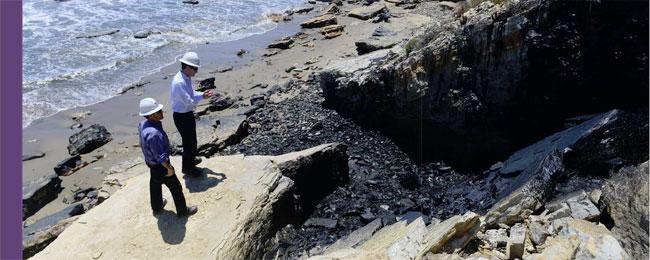
A Year of Disaster Response
Emergency response teams had a busy year, with large-scale cleanups of a coastal oil spill, two major wildfire areas and a typhoon.
- Oil Spill Strikes Santa Barbara Coast »
On May 19, 2015, more than 100,000 gallons of crude oil spilled from a ruptured pipeline less than a mile from the Santa Barbara County coastline. The oil travelled through a culvert under Highway 1 and across Refugio State Beach, with an estimated 21,000 gallons reaching the ocean. The result was California's largest coastal oil spill in the past 25 years.
EPA on-scene coordinators worked with the Coast Guard, the state Department of Fish and Wildlife's Office of Spill Prevention and Response, and the county's Office of Emergency Management to quickly contain and remediate the spill.
Nearly 1,000 workers participated in the first weeks. On the water, cleanup crews used thousands of feet of boom to corral and absorb the oil and recovered 10,000 gallons of oily water. On land, thousands of cubic yards of oiled vegetation, sand and soil were removed.
To ensure the job would be properly carried out, EPA and the Coast Guard issued a cleanup order to the pipeline's owner, Plains All-American Pipeline L.P., on May 27. The order established federally enforceable timelines and cleanup requirements for the long-term actions needed to restore coastal resources.
- Ensuring Safe Recovery from Wildfires, Typhoon »
In September and October 2015, two major wildfires burned more than 200 square miles in Northern California's Lake, Calaveras and Amador counties. On September 28, while the fires were still burning, EPA on-scene coordinators began clearing properties of household hazardous waste in a buffer zone around schools while also performing air and radiation monitoring.
Propane tanks, pressurized cylinders like oxygen tanks and aerosol cans, and containers with wastes that could have survived the fires were brought to a staging area, sorted, and sent to proper disposal sites. Properties were then sampled to ensure they were safe for rebuilding.
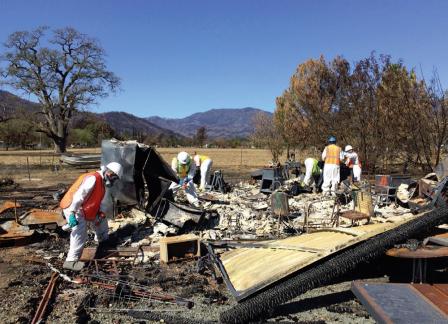 Response personnel identify and dispose of household hazardous waste in burned homes.By late October, EPA and the state Department of Toxic Substances Control had cleared 610 properties in the Butte Fire area, while in Lake County, EPA crews had cleared 632 properties.
Response personnel identify and dispose of household hazardous waste in burned homes.By late October, EPA and the state Department of Toxic Substances Control had cleared 610 properties in the Butte Fire area, while in Lake County, EPA crews had cleared 632 properties.In the outer Pacific, EPA response personnel did a similar job with the Coast Guard and contractors in the Commonwealth of the Northern Mariana Islands (CNMI) after Typhoon Soudelor swept through the area in August.
Responders had to act quickly to ensure that hazardous waste wasn't swept up in the clearing of non-hazardous debris. They also collected and disposed of transformers filled with PCBs from downed power poles. In addition, EPA drinking water experts helped restore the islands' damaged drinking water systems (see Clean Water).
Managing Abandoned Mines
EPA works to protect ecosystems and nearby communities from the severe environmental hazards posed by abandoned mines.
- New Resources for Cleanups »
Mining has been an economic driver in western states for more than 150 years. However, thousands of abandoned mines have left a toxic legacy requiring careful oversight to prevent further contamination of nearby lands and water bodies.
Many of the most hazardous sites are on Superfund's National Priorities List (NPL), which provides authority and funding to conduct investigations and cleanups. Ongoing efforts to strengthen financial assurance requirements for mine owners will help ensure that fewer mines become abandoned and a burden for future taxpayers. There are an estimated 42,000 abandoned mines in California alone.
Among the hazardous mine sites being managed in the Pacific Southwest:
Iron Mountain, near Redding, Calif., is honeycombed with tunnels from more than a century of mining that ended in the 1960s. As a result, wet season runoff seeps into the mountain, where it picks up toxic dissolved metals and becomes highly acidic before flowing out at the base of the mountain. In the 1960s and 1970s, dissolved heavy metals from the mine sometimes resulted in massive fish kills in the Sacramento River.
Since 1983, when EPA listed Iron Mountain as a Superfund site, EPA has diverted the acidic water into treatment systems, and built a dam near the base of the mountain to store the runoff so it can all be treated. By 2004, this eliminated 97% of the metals flowing into the river from the mine. Such treatment has now been funded by responsible parties for the next century.
The abandoned Argonaut gold mine in Jackson, a historic town in California's Sierra Nevada foothills, left 65 acres of mine tailings after operating from the 1850s until 1942. Over the past year, EPA cleaned up 11 residential yards, a large vacant lot and a junior high school lunch area contaminated with high levels of arsenic, lead and mercury from the mine tailings.
The state of California is currently working to reduce hazards from a 100-year-old tailings dam and is supporting EPA's efforts to add the site to the NPL.
At the Rio Tinto Mine in northeastern Nevada, EPA and the state Department of Environmental Protection reached an agreement in 2012 with the corporate successors to four former mine owners, who are paying $25 million for a cleanup now underway.
Under the agreement, the four corporations are removing mine tailings from Mill Creek, improving the creek to support native redband trout, and improving water quality in Mill Creek and the East Fork Owyhee River. The state of Nevada is overseeing the cleanup with input from EPA and the Shoshone Paiute Tribes of Duck Valley.
At the abandoned Anaconda Copper Mine in Yerington, EPA and the state of Nevada have taken a number of short-term actions over the past decade to prevent toxics from migrating off-site. Hundreds of monitoring wells have been drilled to map and monitor the plume of contaminated groundwater. In 2016, the state of Nevada supported the site's potential inclusion on the NPL.
Focus on Hawaii, Pacific Islands
Fresh water is especially precious on islands in the Pacific, where EPA is working to prevent pollution from underground tanks and sewage.
- Addressing Contaminants in Hawaii »
The Red Hill Fuel Storage Facility near Pearl Harbor is the nation's largest underground fuel storage tank facility, with 20 tanks, each 250 feet tall and 100 feet in diameter, encased in concrete, lined with steel and built within a hillside.
Leaking jet fuel poses a potential threat to nearby groundwater, which is a source of drinking water for the U.S. Navy's Joint Base Pearl Harbor-Hickam and surrounding areas. In response to a recent leak of about 27,000 gallons of fuel, EPA and the Hawaii Department of Health (DOH) reached a binding agreement with the Navy and the Defense Logistics Agency (DLA) in September 2015.
The agreement requires response to the fuel release and a number of measures to minimize the threat of future leaks at Red Hill, with EPA and DOH overseeing and approving all work done by the Navy and DLA, and with penalties imposed if work isn't carried out as specified.
Large-capacity cesspools are another threat to Hawaii's groundwater. Since 2005, EPA and state regulations have required owners to close them and use state-approved septic or wastewater treatment systems. More than 3,000 have been closed.
Last year, EPA took action against three businesses that had not complied, assessing penalties totaling more than $300,000. Maui's Travaasa Hotel Hana Resort, Oahu's Vacation Inns International and Shaka's Pahoa LLC on the Big Island all committed to closing their remaining cesspools within two years.
- Protecting Outer-Island Waters »
The Pacific island territories of Guam and American Samoa and the Commonwealth of the Northern Mariana Islands have long been plagued by wastewater and drinking water issues, too often requiring some residents to boil their tap water before drinking it.
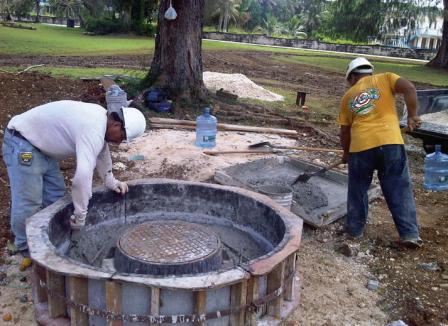 EPA has funded sewer improvements on Saipan.In 2015, the Guam Waterworks Authority received $9.2 million from EPA's State Revolving Funds for design and construction of drinking water and wastewater infrastructure. Another $3 million was granted to Guam EPA to administer their programs, which include protecting drinking water sources and funding watershed restoration projects.
EPA has funded sewer improvements on Saipan.In 2015, the Guam Waterworks Authority received $9.2 million from EPA's State Revolving Funds for design and construction of drinking water and wastewater infrastructure. Another $3 million was granted to Guam EPA to administer their programs, which include protecting drinking water sources and funding watershed restoration projects.EPA also helped secure a congressional appropriation of $106.4 million for drinking water and wastewater improvements as the Department of Defense builds capacity for its planned expansion on Guam.
American Samoa received $11.5 million from EPA, $9 million of which is for infrastructure to improve drinking water quality. EPA has focused on reinforcing American Samoa's efforts to secure a sustainable drinking water supply and prepare for the impacts of climate change as part of its Making a Visible Difference initiative to support underserved communities.
CNMI was awarded $8.6 million, of which $6.7 million is targeted for water infrastructure. (See Pacific Island Territories for more information.)


Supporting Local Initiatives
EPA's partnership programs encourage local governments and organizations to take the initiative in solving environmental problems.
- Food Recovery Takes Off »
The largest category of waste going to landfills – 21% – is food. Across the nation, almost 35 million tons of food worth more than $161 billion goes to landfills annually. As it rots, food produces methane, a greenhouse gas contributing to climate change.
To address this problem, EPA is promoting food recovery and waste prevention with the Food Recovery Challenge, a program where organizations and businesses pledge to prevent and reduce their wasted food.
At UC Santa Cruz, students and food service staff cut food waste by more than 750 tons in just one year. They reduced the amount of food that became waste by 100 tons, donated 1,000 pounds of usable food to the needy, and diverted 650 tons from landfills to composting.
Disneyland Resort in Anaheim, Calif., diverted more than 3,500 tons of food scraps, donated more than 50 tons of usable food, and converted more than 1,200 tons of used cooking oil to biodiesel that fuels the park's railroad and riverboat, reducing consumption of petroleum-based diesel by about 150,000 gallons per year.
In Nevada, MGM Resorts' 13 Las Vegas resorts diverted a total of 25,000 tons of food from landfill to compost, a 50% increase in one year. In the individual hotel category, MGM Grand Las Vegas received a national award for diverting more than 5,000 tons of food scraps to compost, a 161% increase in one year.
The Santa Ynez Band of Chumash Indians and Chumash Casino Resort received a Food Recovery Challenge award for preventing more than 13 tons of food waste from entering landfills, and increasing the amount of food scraps fed to animals by more than 80 tons.
Nationally, Food Recovery Challenge participants have reduced over 606,000 tons of wasted food, including over 88,500 tons donated to organizations that help feed the needy.
Protecting Communities
EPA is taking action to protect people at work and in their homes from hazards that are often unseen.
- New Standard for Agricultural Workers »
Recognizing that the 1992 Agricultural Worker Protection Standard (WPS) was not working as intended, EPA revised the regulation to better protect the nation's two million agricultural workers and their families from pesticide exposure.
These changes will reduce the risks of injury or illness by providing farmworkers with health protections that workers in other industries already have. For example, children under the age of 18 will be prohibited from handling pesticides.
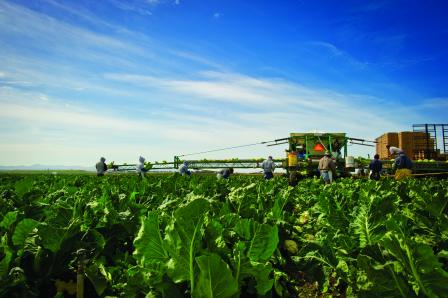 New standards will better protect agricultural workers and their families from pesticide exposure. (Photo: CA DWR)Most of the revisions will be effective in January 2017, giving growers, workers and state agencies time to learn about the new rules. EPA is supporting outreach efforts by state agencies to the regulated community and organizations that support farmworker health and safety.
New standards will better protect agricultural workers and their families from pesticide exposure. (Photo: CA DWR)Most of the revisions will be effective in January 2017, giving growers, workers and state agencies time to learn about the new rules. EPA is supporting outreach efforts by state agencies to the regulated community and organizations that support farmworker health and safety.Last year, EPA trained 169 promotores (community outreach/health workers) on pesticide safety, the WPS, and information on where to report pesticide exposures. These trusted members of their communities will reach more than 14,500 farmworkers and their family members in California, as EPA continues to work with promotores throughout the Pacific Southwest.
- Addressing Dangers of Vapor Intrusion »
The risk of exposure to toxics rising as vapor from underground has only recently been recognized. But EPA's Superfund program in the Pacific Southwest has already made it a priority, defining best practices for identifying vapor intrusion, taking swift action to protect occupants of homes and buildings, and mitigating those risks for both the short and long term.
Vapors can emanate from groundwater contaminated by industrial chemicals. If the vapors move under a building, they can pass through cracks and other openings in the foundation and enter the indoor air. If the levels of the volatile chemicals are high enough, they can cause health problems.
Last year, EPA conducted vapor intrusion investigations at 24 Superfund sites in eight different communities in California. These investigations required EPA staff to go door-to-door to over 1,400 homes, commercial buildings, and schools.
EPA staff talked with residents and business owners in English, Spanish and Punjab, explaining vapor intrusion and how air would be sampled in their buildings. The agency developed fact sheets, held community meetings, posted flyers around neighborhoods and in schools, set up a mobile information center, and provided real-time translation to share information with residents.
After analyzing air samples from more than 450 buildings, EPA has begun designing and installing mitigation systems at 25 of them where vapor intrusion had occurred, including a day care center, a kindergarten and an elementary school.
Focus on Nevada
Nevada communities are benefitting from cleaner air and rapid response to toxic threats.
- Clean Air for Nevadans »
EPA has redesignated Nevada's Reno-Sparks area as attaining the national air quality standard for coarse particulate matter (PM10). With that designation, the state of Nevada attained all existing federal air quality standards for the first time, after many years of work by Nevada agencies and EPA to reduce air pollution.
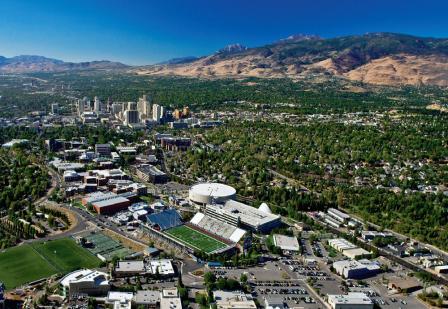 The Reno-Sparks area is enjoying cleaner air.
The Reno-Sparks area is enjoying cleaner air.
(Photo courtesy of University of Nevada, Reno)In the Reno-Sparks area, the air district has adopted controls reducing particulate emissions from residential wood burning and dust from roads. In southern Nevada, programs in Clark and Nye Counties have significantly reduced particulate emissions from vacant lots and construction sites. Statewide programs for cleaner fuels and smog checks for cars have also reduced emissions of ozone precursors and carbon monoxide, maintaining healthy air quality.Over recent years, however, scientific evidence has come to show that EPA's national air quality standard for ozone (smog) was insufficient to protect public health. So EPA set a stricter ozone standard, which took effect in late 2015. EPA staff are continuing to work with Nevada's state and regional air quality regulators to meet the new ozone standard.
- EPA Leads Local Cleanups »
EPA's Superfund Emergency Response Program takes action quickly to remove imminent threats to public health and the environment, wherever they may be.
The Black Bear Patent Site, near the isolated mining town of Searchlight, was an abandoned, illegal operation that recovered usable copper from soils and ores from defunct mines. The operators had left a toxic mess: cyanide heap leach pads and ponds, acid leach tanks, over 300 55-gallon drums of partially processed ores, and chemicals in unlabeled, deteriorating containers.
For 25 days in May 2015, EPA directed a crew who took samples from the tanks and containers to determine the types of hazardous waste they contained, and prepared them for removal to licensed hazwaste disposal facilities. By May 29, the hazardous materials had been removed.
In a less remote setting, EPA responders took rapid action in February 2015 after a student brought a salt shaker filled with toxic liquid mercury to school, leaving trails of it down the hallways of Winnemucca Junior High in northern Nevada.
School officials evacuated the students and called the Nevada Division of Emergency Management. State environmental officials requested assistance from EPA.
EPA-supported crews spent days monitoring and decontaminating classrooms and homes to ensure that children and their families were safe.
Enforcement & Stewardship


A Broad Enforcement Presence
Enforcing federal environmental laws is a central mission of EPA's regional offices.
- Cases Span Multiple Environmental Statutes »
EPA enforces federal environmental laws regulating air and water pollution, pesticides, hazardous wastes, toxic substances, toxic cleanups, and inland oil spills. The agency also delegates authority to state agencies and tribal governments to enforce some of these laws.
Last year EPA conducted 883 inspections of regulated facilities in the Pacific Southwest and initiated 126 enforcement actions. Penalties totaled $6.7 million. A sampling of recent cases:
At the Ports of Oakland, Long Beach and Los Angeles, ships offload thousands of imported ATVs, scooters and other fuel-burning engines every month. If they're not certified by EPA to meet federal emissions standards, they likely violate the Clean Air Act. These small engines can add up to big emissions of carbon monoxide and smog-forming pollutants.
EPA worked with U.S. Customs and Border Protection to conduct 153 inspections. Illegally imported engines found at these ports can be returned to their countries of origin or confiscated. Last year EPA cited 17 violators, levied $95,000 in fines, and kept more than 3,000 illegal engines from being sold, preventing the release of an estimated 200 tons of air pollutants in the United States.
On Oahu, the City and County of Honolulu violated the Clean Air Act by failing to operate a gas collection system for 11 years at its closed Kapaa Landfill, which released more than 271,000 tons of methane and 5,400 tons of hazardous air pollutants and volatile compounds before a system was put into place.
Honolulu agreed to install a $16.1 million solar power system and pay an $875,000 penalty. The project will install more than 250,000 square feet of photovoltaic panels at the city's waste-to-energy facility by 2020, reducing reliance on fossil fuels on Oahu.
In California, the Lehigh Cement facility near Cupertino in Silicon Valley was discharging water contaminated with selenium and other toxic metals into Permanente Creek daily for years, violating the Clean Water Act. The contaminants ultimately flowed into San Francisco Bay.
Lehigh paid a $2.55 million penalty and is spending more than $5 million to install an advanced wastewater treatment system and reduce sediment in its stormwater.
When pesticide labels are false or misleading, they put people at risk. A subsidiary of The Clorox Co. had been selling a hospital disinfectant that EPA found was ineffective against tuberculosis bacteria. The label's claim that it was effective was therefore misleading, a violation of the Federal Insecticide, Fungicide, and Rodenticide Act. The subsidiary removed the tuberculosis claim from the product and paid a $250,000 penalty.
Lynx Enterprises, a metal finishing firm in Tracy, Calif., violated federal hazardous waste regulations under the Resource Conservation and Recovery Act. Lynx paid a $29,000 penalty and is spending an additional $108,000 to develop hazardous waste training materials for the metal finishing industry, including a video summarizing federal, state and local hazardous waste requirements for use by 83 local agencies in California.
Prioritizing Children's Health
Children are more sensitive to pollution. Tailored strategies help protect kids and their families.
- Reducing Risks to Kids at Home, School »
EPA's partnerships with educational institutions and small businesses are a key to ensuring future environmental progress.
Lead exposure is more dangerous to children because their growing bodies absorb more lead, which can cause behavior and learning problems, slowed growth and diminished IQ. Higher levels of exposure have been found in low-income families, those living in older housing, and children of color, particularly African Americans.
Lead-based paint was banned in 1978, but 37 million homes in the U.S. still have it on their walls. Contractors who disturb painted surfaces in pre-1978 homes and child-occupied facilities must inform residents about risks, be trained and certified, and follow safe work practices. Last year, EPA levied fines totaling more than $100,000 on residential renovation and property management companies in California for violations of lead paint rules.
Children are also more sensitive to air pollution, which can aggravate asthma. In California's Imperial Valley, EPA funded a home health worker to educate low-income families on environmental asthma triggers and prevention. This one person made a big difference: Among the 46 families she visited, there was a 94% reduction in hospital vis.its. Based on these results, EPA provided training on asthma triggers for 43 community health work.ers and 35 medical providers in rural California.
- New Publications Offer Guidance »
At schools across the U.S., renovation activities and busy nearby roadways can also release pol.lutants that endanger children's health. EPA has two new publications to help schools and parents minimize exposures and protect kids' health.
More than half of public schools nationwide need to repair, renovate and modernize. Understanding the risks at the beginning of a project can help schools avoid expensive, time-consuming remediation, and improve children's health and academic success.
The Sensible Guide to Healthier School Renovations can help keep school environments healthy while cleaning up contaminants like asbestos, mold, mercury, lead and radon that are often associated with renovations. This guide summarizes potential hazards and best practices.
Nearly 17,000 U.S. schools are within 1/10th of a mile of a major roadway. In California, more than 400,000 children attend schools where heavy traffic may influence air quality.
EPA's Best Practices for Reducing Near-Road Pollution Exposure at Schools offers strategies for limiting exposure, including ventilation and filtration, school siting and layout, bus fleet upgrades, anti-idling policies, sound walls, and more.
www.epa.gov/schools
Focus on Arizona
Enforcement cases and partnerships work toward the same goal – healthier communities.
- Large Facilities Cut Air Emissions »
The ASARCO copper smelter in the town of Hayden is Arizona's largest source of sulfur dioxide (SO2) and a major source of nitrogen oxides (NOx), particulate matter (PM), and hazardous air pollutants such as lead and arsenic.
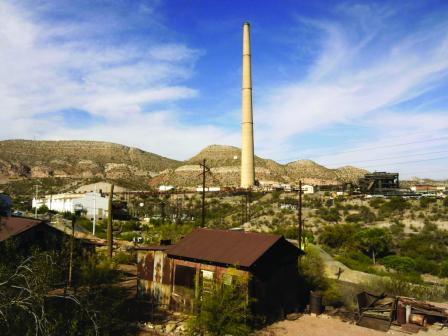 Emissions of heavy metals will decrease at the 104-year-old ASARCO copper smelter in Hayden, Arizona.EPA's November 2015 settlement of an enforcement case requires ASARCO to spend $150 million on new equipment and pollution controls to reduce emissions of toxic heavy metals. ASARCO must also fund $8 million worth of local environmental projects such as lead paint abatement, replace a diesel locomotive with a cleaner model, and pay a $4.5 million penalty.
Emissions of heavy metals will decrease at the 104-year-old ASARCO copper smelter in Hayden, Arizona.EPA's November 2015 settlement of an enforcement case requires ASARCO to spend $150 million on new equipment and pollution controls to reduce emissions of toxic heavy metals. ASARCO must also fund $8 million worth of local environmental projects such as lead paint abatement, replace a diesel locomotive with a cleaner model, and pay a $4.5 million penalty.Lead and arsenic emissions are expected to decrease by at least 8.5 tons per year, PM emissions by 3,500 tons per year, and SO2 emissions by 19,000 tons per year – more than 90%.
In a second major case, several Arizona and New Mexico-based utilities are now required to install pollution controls to reduce harmful emissions from their coal-fired Four Corners Power Plant on the Navajo Nation near Shiprock, N.M.
The settlement requires an estimated $160 million in upgrades to the plant's SO2 and NOx pollution controls. The owners must also pay $6.7 million on three health and environmental mitigation projects for tribal members, and a $1.5 million penalty. The pollution controls are expected to reduce harmful emissions by about 5,540 tons per year.
- Working with Local Communities »
EPA is working in several areas in Arizona to provide funding, recognition or other assistance in improving public health and revitalizing communities.
School districts in the Tucson area have been active partners. Last year, a $150,000 EPA grant was combined with about $800,000 from participating school districts to replace six diesel school buses in the Tucson area with four new compressed natural gas and two propane buses. The new buses will reduce children's exposure to diesel emissions, which can worsen symptoms of asthma and bronchitis.
Meanwhile, the Tucson Unified School District was named an EPA Green Power Partner of the Year for installing the nation's largest on-site solar generating facility at a K-12 school system.
Their project placed solar arrays at 43 sites with a capacity of more than 11 megawatts. These solar arrays produce nearly 20 million kilowatt-hours of green power per year – about 20% of the district's annual electricity use.
In Tucson, Phoenix and Yuma, EPA's Brown-fields program provided $1.2 million in funding for assessing and cleaning up contaminated urban and industrial properties and restoring them to productive use.
Pima County's $400,000 grant will encourage economic development in one of Tucson's oldest neighborhoods, the Southside. Phoenix is using its $400,000 grant to assess industrial areas for immediate reuse, and potential sites for community gardens. Yuma's $400,000 grant will go to assessments in Old Town South, where hazardous and petroleum contamination from historic land uses may remain.
PACIFIC ISLAND TERRITORIES
Stronger Pacific Storms Show
Need for Resilience
Last summer's Typhoon Soudelor was an example of the increasingly frequent and powerful storms in the tropical Pacific that stem from the rising greenhouse gas emissions worldwide. The typhoon devastated Saipan in CNMI, knocking out the island's power grid by downing hundreds of power poles.
The damage took months to repair. EPA on-scene coordinators collected transformers filled with toxic PCBs from the downed poles, while EPA drinking water experts worked to restore safe water, which was unavailable without power to pump water from wells.
Fortunately, 40 sewage pumping stations continued operating, thanks to EPA grants that had earlier paid for refurbishing them, including the addition of backup generators. This resilient infrastructure prevented sewage from spilling into Saipan's streets.
American Samoa Islands
Go Solar
An isolated island group in the South Pacific, American Samoa is vulnerable to the stronger typhoons and sea-level rise associated with global climate change. islands' principal energy source is oil, including and diesel, delivered by tanker ship at a high cost.
Blessed with plenty of sunlight, the territory adopted a goal of fossil-free energy independence. help achieve this, EPA is providing funding and technical assistance for solar energy micro-grid systems.
On American Samoa's remote Manu'a Islands, electricity comes from an old generator fueled by grade diesel that creates so much particulate pollution banned on the U.S. mainland.
An EPA grant is helping retire the old generator build a solar power station with battery storage the lights on at night.
Vulnerable Island
Ecosystems
Pacific island ecosystems are extremely vulnerable to the impacts of climate change, particularly sea level rise and ocean acidification, which could stop the growth of coral and shelled organisms. Plastic marine debris breaks down into tiny bits in ocean waters, which are mistaken for food and eaten by birds and fish, poisoning or starving them.
STRENGTHENING ISLAND
INFRASTRUCTURE
EPA provided $32.4 million in fiscal 2015 to improve environmental protection and public health on island territories in the Pacific – American Samoa, Guam and the Commonwealth of the Northern Mariana Islands.
Since 2010, the islands have received more than $200 million in water and wastewater infrastructure support – more than in the previous 40 years.
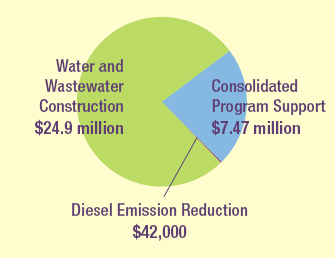
EPA Funding for FY2015 for the Pacific Southwest Region
About 82% of the $714 million budget appropriated by Congress for EPA's Pacific Southwest Region flows to state and tribal agencies, local governments, nonprofit organizations and private-sector companies in the form of grants and contracts.
This funding pays for drinking water and wastewater infrastructure, clean air programs, Superfund site cleanups, rehabilitation of contaminated lands, and many other activities supporting communities and public health.
For more information on grants, visit www.epa.gov/grants.
Regional Funding by Strategic Goal
All told, more than half of regional funding is applied toward the goal of Protecting America's Waters. Most of the $369 million in grants awarded under this goal goes to the State Revolving Fund, which supports drinking water and wastewater infrastructure as well as nonpoint source pollution and estuary protection programs.
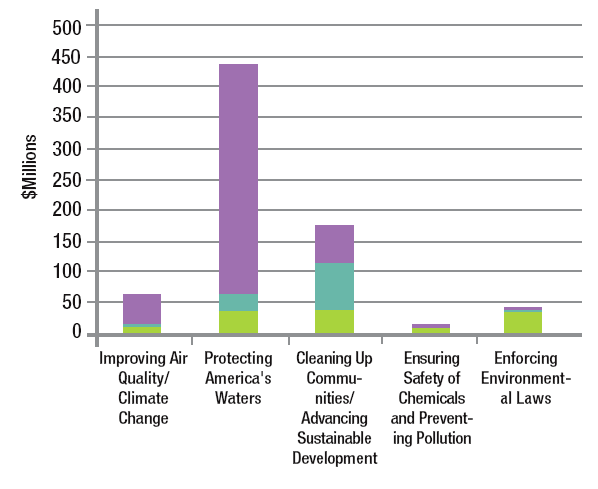
Regional Administrator's Letter
Dear Readers,
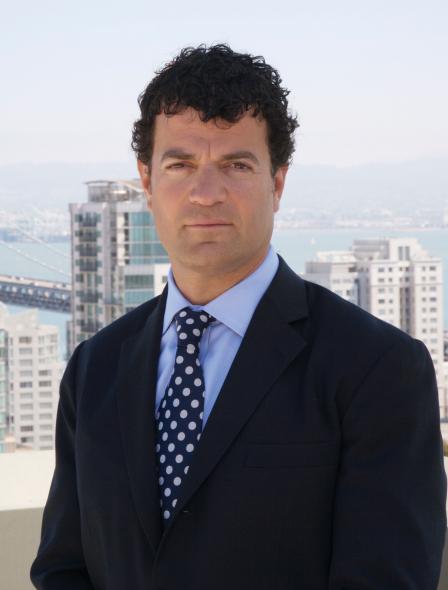 In 1970, EPA was created to protect human health and the environment. Remarkable gains have been made in those decades – and as new, global challenges have arisen, EPA's role has become more vital than ever.
In 1970, EPA was created to protect human health and the environment. Remarkable gains have been made in those decades – and as new, global challenges have arisen, EPA's role has become more vital than ever.
EPA staff in the Pacific Southwest bring experience, talent and a passion for public service to a range of issues that are increasingly in the public eye – from the Navajo Nation to the far reaches of the Pacific Ocean.
On the islands of the western Pacific, we've used Clean Water and Safe Drinking Water Act funding to upgrade wastewater and drinking water infrastructure, which now provide safe drinking water to 98% of island residents, up from 39% in just over a decade.
In this report, you'll also read about California's statewide efforts to trap trash before it can wash into storm drains – keeping it out of waterways that empty into the Pacific.
Throughout the Pacific Southwest, we work with state, local and tribal governments to reduce the greenhouse gas emissions that contribute to climate change, even as we invest in resilient infrastructure to adapt to its consequences.
From the enforcement authority granted by the Clean Air Act and other statutes to commonsense programs to reduce food waste and encourage clean energy, we have powerful tools to improve the health of our communities and protect the environment that supports all of us.
It's time to roll up our sleeves. We hope the environmental successes in this report will inspire you to join us.
Sincerely,

Regional Administrator
EPA Pacific Southwest Region



